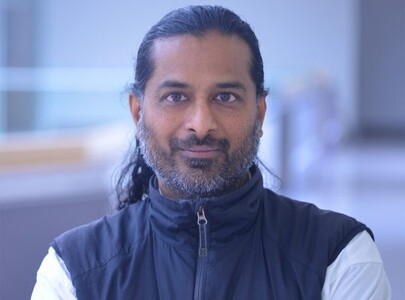Events
Nov 17, 2025
Seminar by Professor Shankar Srinivas; Talk title: Patterned heterogeneities in tissue mechanics regulates cell migration during early mammalian development
School of Biomedical Sciences cordially invites you to join the following seminar:
Speaker: Professor Shankar Srinivas, Professor of Developmental Biology, Department of Physiology, Anatomy & Genetics, University of Oxford
Talk Title: Patterned heterogeneities in tissue mechanics regulates cell migration during early mammalian development
Date: 17 November 2025 (Monday)
Time: 5:30 pm – 6:30 pm
Venue: Seminar Room 4, G/F, Laboratory Block, 21 Sassoon Road
Host: Professor Kathryn Cheah
Biography

Shankar completed a BSc in Nizam College in Hyderabad, India. He then joined the group of Frank Costantini in Columbia University, New York, where he received a PhD for work on the molecular genetics of kidney development. Following this, he moved to the NIMR in Mill Hill, London, where he worked as a HFSPO fellow in the groups of Rosa Beddington and Jim Smith on how the anterior-posterior axis is established. Here, he developed time-lapse microscopy approaches to study early post-implantation mouse embryos, with which he characterised the active migration of cells of the Anterior Visceral Endoderm, a process essential for the correct orientation of the anterior posterior axis of the embryo. In 2004 Shankar started his independent group at the University of Oxford as a Wellcome Trust Career Development Fellow and as Zeitlyn Fellow and Tutor in Medicine at Jesus College. In 2016 he became Professor of Developmental Biology.
Abstract
During mouse embryogenesis, migration of distal visceral endoderm (DVE) positions it correctly within the visceral endoderm (VE) to specify axial pattern in the underlying epiblast. It is unknown how these epithelial cells negotiate their way through surrounding cells, and how they stop once they reach their destination.
Using lightsheet microscopy and a data-informed computational framework, we performed a multi-parametric characterisation of every VE cell during DVE migration. This revealed previously unappreciated phenomic heterogeneity, that mapped to spatially distinct VE regions. Laser-ablation and fluorescence lifetime imaging of a tension sensor revealed differences in the mechanical properties of these regions. Genetic mutants and DVE specific optopharmacological inhibition of myosin showed that these differences are dependent on actomyosin function. DVE cells stop migrating upon reaching a region of VE with matching tension, that is dependent on LEFTY1, a secreted inhibitor of NODAL signalling. Lefty1 mutants show abnormal over-migration of DVE cells, accompanied by extensive disruption to membrane tension and phospho-MyosinIIA localisation in the VE region where DVE cells normally stop migrating.
Our results show that collective migration of cells in an epithelial context can be facilitated, but also circumscribed, by patterned heterogeneities in mechanical properties generated by the local signalling milieu.
ALL ARE WELCOME.

